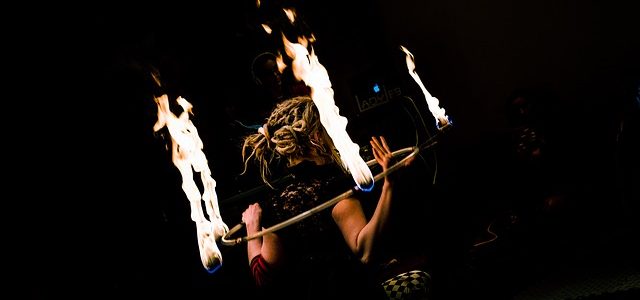Ruth E. Walker
Yesterday was the Winter Solstice. The turning point for the planet where the Northern Hemisphere dips deepest into the dark before moving into a day-by-day increase in daylight. For me, it couldn’t come soon enough. The dark has never been my preference, despite writing some great prose in the wee, dark hours upon occasion. I am someone who is drawn to sunlight.
But the dark is a useful tool in my writing, just as it may be in yours. Darkness finds a place in narrative in different ways.
Beyond the famous opening It was a dark and stormy night, the dark can serve to:
- set up themes
- deliver engaging description
- create foreshadowing
- inspire resonance in your reader

On that last point, let me assure you that readers can hold onto what you write about when it inspires fear. I am still uneasy next to nighttime windows after reading Stephen King’s ‘Salem’s Lot. My rational mind knows there are no vampires out there but he created such a reality for me that I get dark-window tingles more than 25 years after reading the book.
Here’s a couple of ways to use “dark” as a tool to engage your reader:
Focus on difference
Comparisons are a terrific device for all kinds of narrative needs. A character’s fear of the dark is interesting but intensity grows when that character gets a job in mine. Add in a cave in and you have emotional gold.
Landscape description can make great use of the dark. Even in daytime, shadows offer readers visual textures: caves, alleys, clouds, thick forests, distant mountain ranges – it all needs 3D qualities.


Using the dark to represent villains is cliché but can still be useful if you’re creative. From Snow White’s evil stepmother to every rotten gunslinger to heartless Darth Vader, black is the clothing tone. However, consider Pennywise the Clown from It, and sadistic King Joffrey Baratheon in Game of Thrones.
Similarly, consider superheroes such as Black Panther, Batman and Catwoman. They fight for good but are dressed in black, a counterintuitive representation. And that makes them interesting visually.
Play with expectations
As a kid, I watched westerns a lot on television, including Have Gun Will Travel. The gunslinger named Paladin in this series was always hired by good folks in trouble. And he wore a distinctive black felt Western hat. A hat so distinctive that you can order one of your very own “with the kettle curl and with the pecan crown” from The Last Best West company for as little as $390 US.

I think the reason Paladin’s iconic hat still carries energy is that it represented the complication of the human soul: we are a combination of good and bad — it’s our choices that define who we are. Despite the black hat of this hired gun, his choices were to do good. It’s no coincidence that Paladin, his assumed name, comes from the French Chevaliers of Charlemagne’s 8th century court. He was the classic white knight in a black hat.
As a child, I had no idea of all that history and cultural baggage. But that doesn’t matter. I sure knew that bad guys in all the western movies I’d seen up to then wore black hats and the good guys wore white hats. So this guy, he was interesting. And for a writer, that’s the point of this piece.
Winter Solstice may be the ideal time to explore the energy found in the dark – stretching and trying on ideas often lead to deeper understanding of this thing we do when we put fingers to keyboard or pen to paper. Besides, as of today, we are moving toward the light. Hooray!
Go deeper
If you want to explore both dark and light on your own, here’s a Writescape exercise you might like to try by using an artist’s approach to dark and light:

Artists refer to six basic concepts when describing the behavior of light on a form, listed here in order of brightness: highlight, direct light, reflected light, shadow, core shadow and cast shadow.
Take your “writer’s paintbrush” and draft a scene, or a poem or whatever you want, using a technique of light and shadow. Choose at least one from light and one from shadow
- in direct light (out in the open and clear to everyone: just the facts, the obvious)
- in reflected light (learning from/being gifted with something: mentored, discovered)
- in highlight (showing/revealing something: sudden reveals or gradual unveiling to ‘ta-da’)
- in shadow (holding something back/grey areas: unclear, dreams, choosing not to share)
- in darkest dark/core shadow (so deep s/he may not even know it exists: secrets, evil, fears)
Have fun with this. May your muse be generous and lead you into the dark and light of a great piece of writing.



 Medical researcher Valdas Noreika is his
Medical researcher Valdas Noreika is his  The beauty of focussing is that we need only think about (substitute “worry about”; “imagine”; “create”) one thing—one small thing—at a time.
The beauty of focussing is that we need only think about (substitute “worry about”; “imagine”; “create”) one thing—one small thing—at a time. She says: “This sentence doesn’t need to have anything to do with the work that you are wrestling. Maybe it’s about the chip in the coffee mug on your desk. Maybe it’s about a phone call with your mother last night. Or the patter of rain against the window. Maybe it’s about the doubt that your story or novel has stirred in you, concretized in an image that will form if you stay long enough between capitalized letter and period for the clichés to flow away, long enough for the appearance of magical corpuscles.”
She says: “This sentence doesn’t need to have anything to do with the work that you are wrestling. Maybe it’s about the chip in the coffee mug on your desk. Maybe it’s about a phone call with your mother last night. Or the patter of rain against the window. Maybe it’s about the doubt that your story or novel has stirred in you, concretized in an image that will form if you stay long enough between capitalized letter and period for the clichés to flow away, long enough for the appearance of magical corpuscles.” Set a timer for one minute (when you get good at this, increase to longer times) and write without ending your sentence. Use any and all conjunctions and other methods of joining phrases, such as: and; and then; but; until; because; however; etc. Just keep writing and writing and writing. Afterwards, it is easy to erase the bits you don’t want and fix the sentence structure.
Set a timer for one minute (when you get good at this, increase to longer times) and write without ending your sentence. Use any and all conjunctions and other methods of joining phrases, such as: and; and then; but; until; because; however; etc. Just keep writing and writing and writing. Afterwards, it is easy to erase the bits you don’t want and fix the sentence structure.







